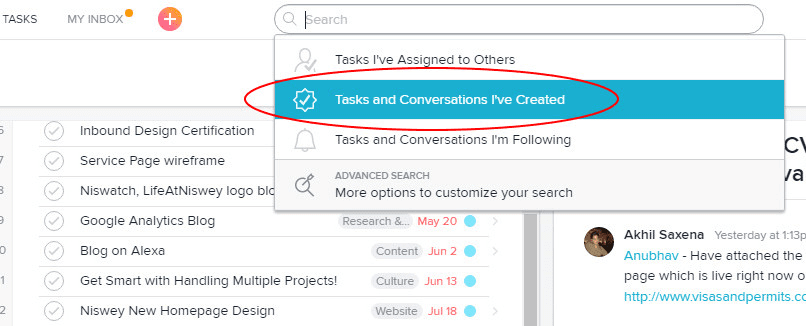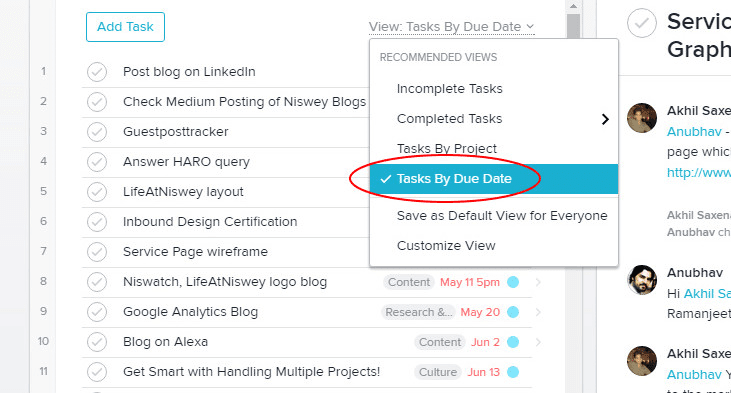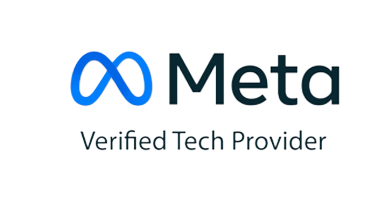All of us at Niswey work with multiple customers at any given point, and almost all of us here possess multiple skills. And when an individual is working with multiple clients on multiple projects, it becomes very important that they have a way to manage things well.

The dynamics of work are very different in small organizations. Founders love to have people on the team who can take ownership of everything that is thrown at them, and team members actually enjoy accepting these challenges.
And it’s a daily thing. A new challenge, a new problem, a new task, another client, multiple follow ups, strategy, project plans, execution, meetings, brainstorming, research, learnings, and the list goes on!
When everyone in an organization is wearing multiple hats and is accountable for everything that they have on their plate, you start to feel the pressure. So the efficiency with which you execute tasks, without losing track of any activity, or losing sight of the larger goal, becomes key.
Is there a way to manage the day better and make it more efficient? How can we make our days more productive?
We faced these questions when growth at Niswey picked up pace. We listed down the problems we faced in handling multiple activities:
1. How can we maintain a list of all the big and small activities that we have lined up for each day?
2. How do we keep track of all our deadlines?
3. Where can we list all the ideas we get daily?
4. It is difficult to keep track of so many tasks over email.
5. Follow up on any activity is difficult.
6. How can we keep from forgetting things that we’ve assigned to others in the team?
7. How can we prioritize things assigned to us? There are so many already and we keep getting new tasks daily!
8. How can we get a bird’s eye view of all our clients, projects and tasks with due dates in one window?
9. How do you focus when you have a huge to-do list, with different deadlines for each task?
With all these questions in mind, we started looking for the best way to manage projects.
We tried multiple project management tools and ultimately settled on Asana. It seemed to have all the features that we wanted and we love it!
Everyone in our team is on Asana. Getting familiar with Asana and starting to use it is a now a part of our incubation process.
So here’s why we moved to Asana:
1. Simplicity: It is one of the easiest and most holistic project management tools around.
2. Ease of on-boarding: It doesn’t really require much training. A basic 30-minute introduction, and anyone can get on board.
3. Priced well: It is free for upto 15 team members, and hence it works great for us.
4. Mobile App: The mobile app lets you access it anywhere, with real-time sync.
5. Email-Free-Management: You can add clients and projects under each client, create daily activities under each project and assign them to anyone in your team with a deadline. And all this without the use of email.
6. Value Adding Features: Features like attaching files, commenting (the way it works on Facebook), having team conversations, and adding due dates to each activity make it really easy for everyone to keep track of everything without a missing a beat!
7. User Experience: It has a beautiful UI and an awesome UX.
8. Hassle Free: You have a bird’s eye view of all your clients, projects, and tasks with due dates—a single window into your work day.
9. Time Saving: ‘Search’ works so well that you can dig out anything from the tool in a jiffy.
10. Agile: It works well in our agile project management scenario.
Isn’t it awesome if you get all this for free?
And that’s not all. Some other features that take Asana to the next level are:
1. Integration with tools like Toggl, Google Calendar, Dropbox, Chrome, HipChat and MailChimp add more power to the tool. There are more integrations possible—the complete list is here.
2. We get to see the progress of our projects in a nice graphical way, which can be exported to Google Sheets.
3. Calendar view of all your activities.
So the problems we were facing before have all been solved with Asana.
Q1. How can we maintain a list of all the big and small activities that we have lined up for each day?
Open Asana as soon as you log in to work, and click on ‘My Tasks’. And you have a quick list of all the tasks that you are supposed to work on that day. You can sort them by deadline and get cracking.

Q2. How do we keep track of all our deadlines?
Sort all your tasks by ‘due date’. And you will know what deadlines you have breached and what is due next.

Q3. Where can we list all the ideas we get daily?
Click on ‘Add task’ and you are done. Put it under the right project, and don’t forget to assign a due date. After all, just an idea is worth nothing; it’s all in the execution.

Q4. It is difficult to keep track of so many tasks over email.
Of course it is. And this is why we do not use email to communicate within the team. We come in the morning, open Asana, click on ‘My Tasks’, and see what’s due that day. Updates and approvals are all shared via comments. No more trawling through mail threads to find out who said what. Everything related to every project is all in one place.
Q5. Follow up on any activity is difficult.
Answer: Not any more. You always have your tasks open and you know what is to be done. If you lose sight of your tasks, only then do you lose track. And if you want to be quick with follow-ups, these hacks will help you.
Q6. How can we track the progress of tasks we’ve assigned to others in the team without forgetting anything?
See the screenshot below and you will know how to keep tabs on tasks that you have assigned to others.
Q7. How can we prioritize things assigned to us—there are so many already and we keep getting new tasks daily!
Use the ‘Sort’ option for tasks. Re-order your tasks by due date, completion status, projects, etc.
Q8. How can we get a bird’s eye view of all our clients, projects and tasks with due dates in one window?
I think you will now agree that it is not that difficult anymore.
Q9: How do you focus when you have a huge to-do list, with different deadlines for each task?
With Asana, you don’t have remember all your tasks. Just keep your tasks window open, and shift all your focus to executing them.
Results of using Asana:
- People can easily manage tasks for 8-10 clients at a time.
- Less paper is used in the office.
- Dependency on emails is reduced for all internal communications
- Our team is more focused on executing tasks and generating more ideas
- We miss out on tasks less often.
- Deadlines are, well, less deadly.
This seems to be the best project management software for us so far, and I hope it will help you get on track with your project planning and execution.
Please let me know if you have any queries specific to project management in Asana. I would be surprised if you do. 😉Learn more about the tool on the Asana blog.
















